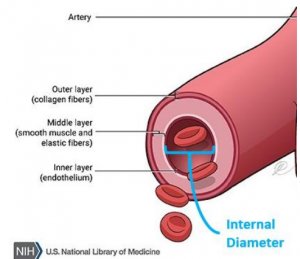Ask the KD Experts: Kawasaki Disease and Z Scores
Question:
What is a Z score?
Answer:
 A Z score normalized for body surface area represents how much larger (or smaller) a measured coronary artery internal diameter is compared to the average coronary artery diameter for a child of the same size (body surface area includes both height and weight). The average diameter is assigned a Z score of 0. Positive Z scores reflect larger diameters, while negative Z scores reflect smaller diameters. Most individuals (~95%) have coronary artery Z scores between -2 and +2, and are considered to have normal coronary arteries (see figure below). A coronary artery Z score between +2.0 and less than +2.5 (i.e., 2 to less than 2.5 standard deviations above the average normalized for body surface area) is considered dilated. A coronary artery with a Z score between +2.5 and less than +5.0 is considered a small aneurysm. A Z score between +5.0 and less than +10.0 is considered a large aneurysm. A Z score of +10.0 or greater is considered a giant aneurysm.
A Z score normalized for body surface area represents how much larger (or smaller) a measured coronary artery internal diameter is compared to the average coronary artery diameter for a child of the same size (body surface area includes both height and weight). The average diameter is assigned a Z score of 0. Positive Z scores reflect larger diameters, while negative Z scores reflect smaller diameters. Most individuals (~95%) have coronary artery Z scores between -2 and +2, and are considered to have normal coronary arteries (see figure below). A coronary artery Z score between +2.0 and less than +2.5 (i.e., 2 to less than 2.5 standard deviations above the average normalized for body surface area) is considered dilated. A coronary artery with a Z score between +2.5 and less than +5.0 is considered a small aneurysm. A Z score between +5.0 and less than +10.0 is considered a large aneurysm. A Z score of +10.0 or greater is considered a giant aneurysm.

Question:
Why use Z scores when measuring coronary artery internal dimensions?
Answer:
Coronary artery aneurysms can be measured in millimeters (mm). However, this measurement does not account for body size. How big the coronary artery should be depends on the size of the child. For instance, a 4-mm aneurysm in a 1 year-old patient carries more severe long-term cardiovascular risks compared to a 4-mm aneurysm in a 10 year-old patient. In contrast, Z scores normalized for body surface area account for body size. This allows us to accurately assess and track aneurysm size over time (i.e., as the patient grows).
Sincerely,

Jane C. Burns, M.D.
Professor and Director, Kawasaki Disease Research Center
Dept. of Pediatrics MC 0641
UCSD School of Medicine
9500 Gilman Dr.
La Jolla, CA 92093-0641
